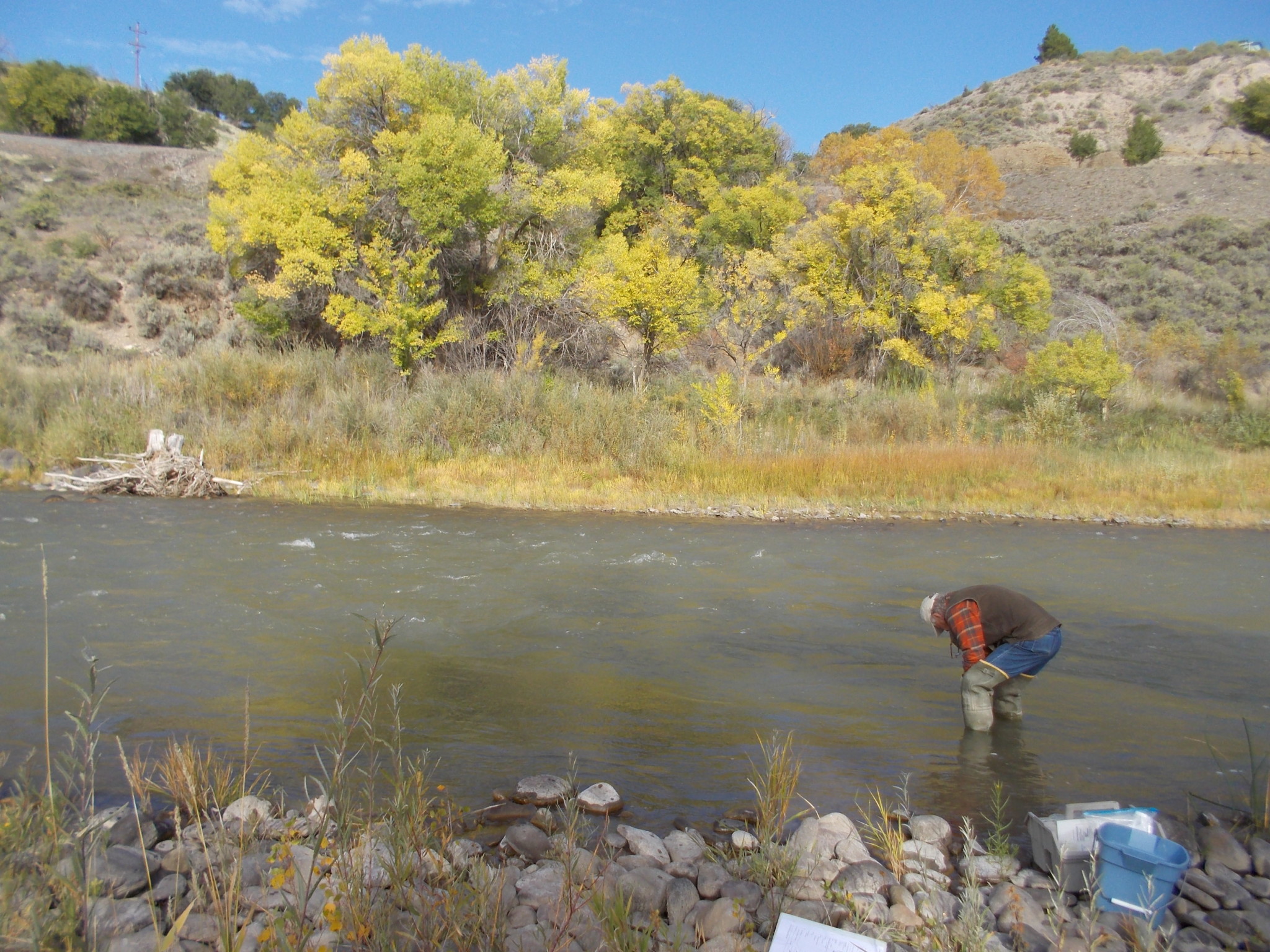Named for the North Fork of the Gunnison River, the North Fork Valley is dependent, as all places are, on safe and reliable water sources. As snow and rain fall on the mountains and mesas that mark our watershed, tributaries like Anthracite Creek, Minnesota Creek, and Cottonwood Creek feed the North Fork which flows into the Gunnison River. As the Gunnison meets the Colorado River in Grand Junction, Colorado, the snowmelt and rainfall that provided water for our fields, homes, and livelihoods will be reused many times over as it flows towards the Gulf of California.
Beginning in 2001, volunteers from the Western Slope Conservation Center (WSCC) have been monitoring the health of the North Fork of the Gunnison River as part of WSCC’s River Watch program. These dedicated volunteers meet four times a year in all weather conditions to collect and analyze samples from the North Fork and its tributaries. Our program is the second oldest River Watch program in Colorado, making the data an invaluable record for local water users as well as for scientists and decision makers.
River Watch of Colorado has been active since 1989 and is primarily funded by Colorado Parks and Wildlife (CPW) through a mix of federal funds and Colorado Lottery funds. River Watch’s mission is to work with volunteer stewards to monitor water quality and other indicators of watershed health and use the data to educate individuals and inform decision makers about the condition of Colorado’s waters. Schools and non-profit organizations all over Colorado have active River Watch programs. Those volunteering are able to get hands-on science experience, learn about Colorado’s aquatic ecosystems, and be a part of reporting data that makes a difference in our beautiful state.
WSCC’s River Watch volunteers collect water samples at ten stream locations ranging from Muddy Creek above Paonia Reservoir all the way to the confluence of the North Fork and mainstem of the Gunnison River, and in the Gunnison River at Austin.
On each collection day, volunteers take the collected samples to the Rogers Mesa Research Station in Hotchkiss to analyze for certain indicators. These include temperature, pH, dissolved oxygen, alkalinity, hardness, conductivity and turbidity. At each collection site, volunteers also collect total and dissolved metal samples and nutrient samples. These samples are then mailed to River Watch of Colorado in Denver to analyze for thirteen metals and seven nutrients.
In addition to the indicators mentioned above, benthic macroinvertebrates are also a factor that River Watch analyzes. Macroinvertebrates have no internal skeletons of cartilage or bone and are large enough to see with the naked eye. They can be found on the river bed (benthic), on, between, and under substrate. Macroinvertebrates that WSCC and River Watch specifically look for are caddisfly, stonefly, and mayfly larvae. Why should we care about these small creatures? Well, they are a vital part of the aquatic food chain and help assess the health of a river due to their high sensitivity to pollution, habitat modification, and natural events.
Throughout Colorado, River Watch groups collect data at more than 1,200 sites on 700 streams. The River Watch volunteers collect far more stream water quality data than any other entity in Colorado, and their data provides reliable, long-term information on the health of Colorado’s streams and rivers. River Watch data is publicly available on the River Watch website, Colorado Data Sharing Network, and the National Water Quality Portal.
Over the years, we’ve seen predictable changes in the data. When analyzing samples, volunteers look back to the same time last year and compare results. During runoff season, it is expected to see significant changes in all of our indicators. Overall, data shows that the water quality of the North Fork of the Gunnison River continues to follow yearly trends.
Do you want to improve your understanding of the health of the North Fork of the Gunnison River watershed and help the local community, while having fun playing in the water? The WSCC River Watch program is always looking for new volunteers to join our team! No experience is necessary. If you are interested in volunteering, please reach out to [email protected].
The Conservation Center has published numerous reports on the North Fork of the Gunnison and Lower Gunnison Watersheds. Read them here!
